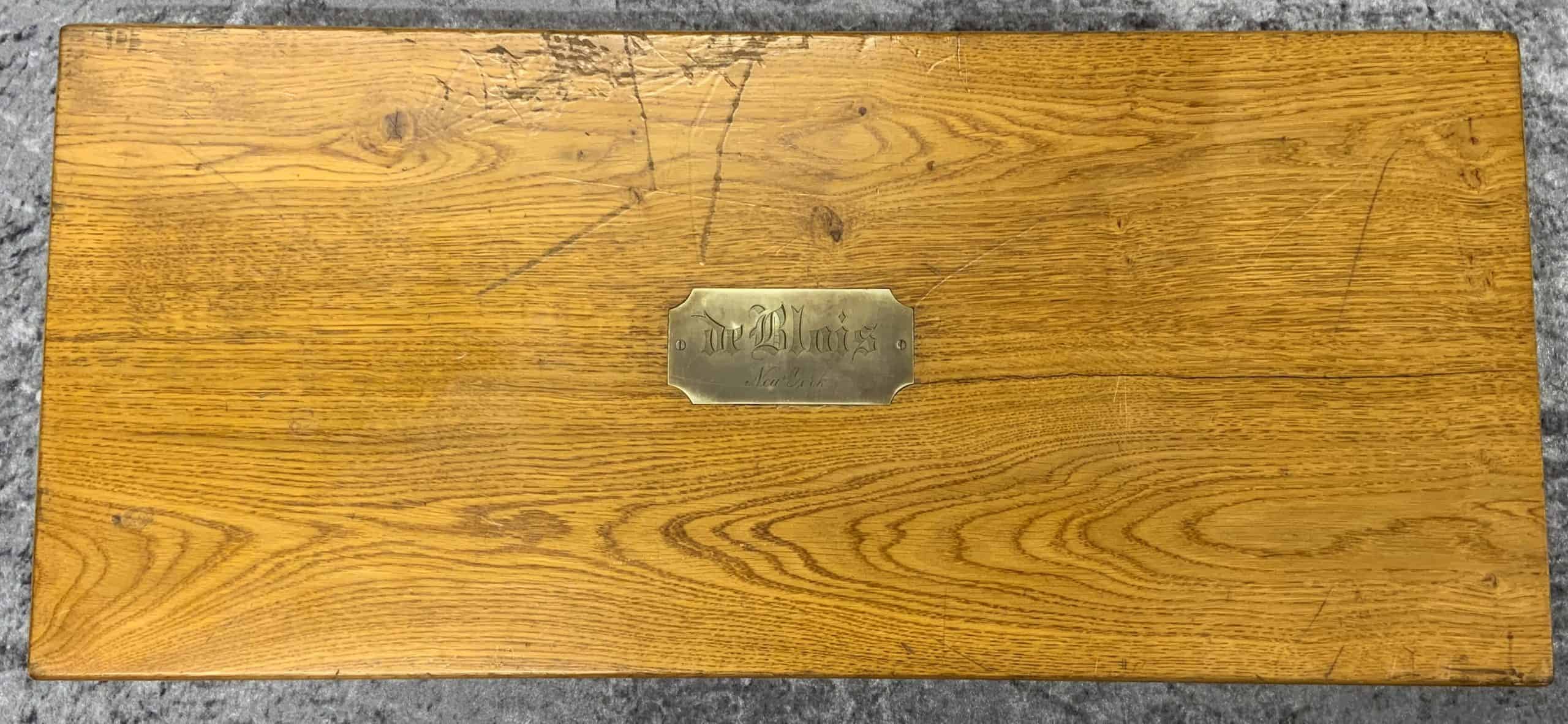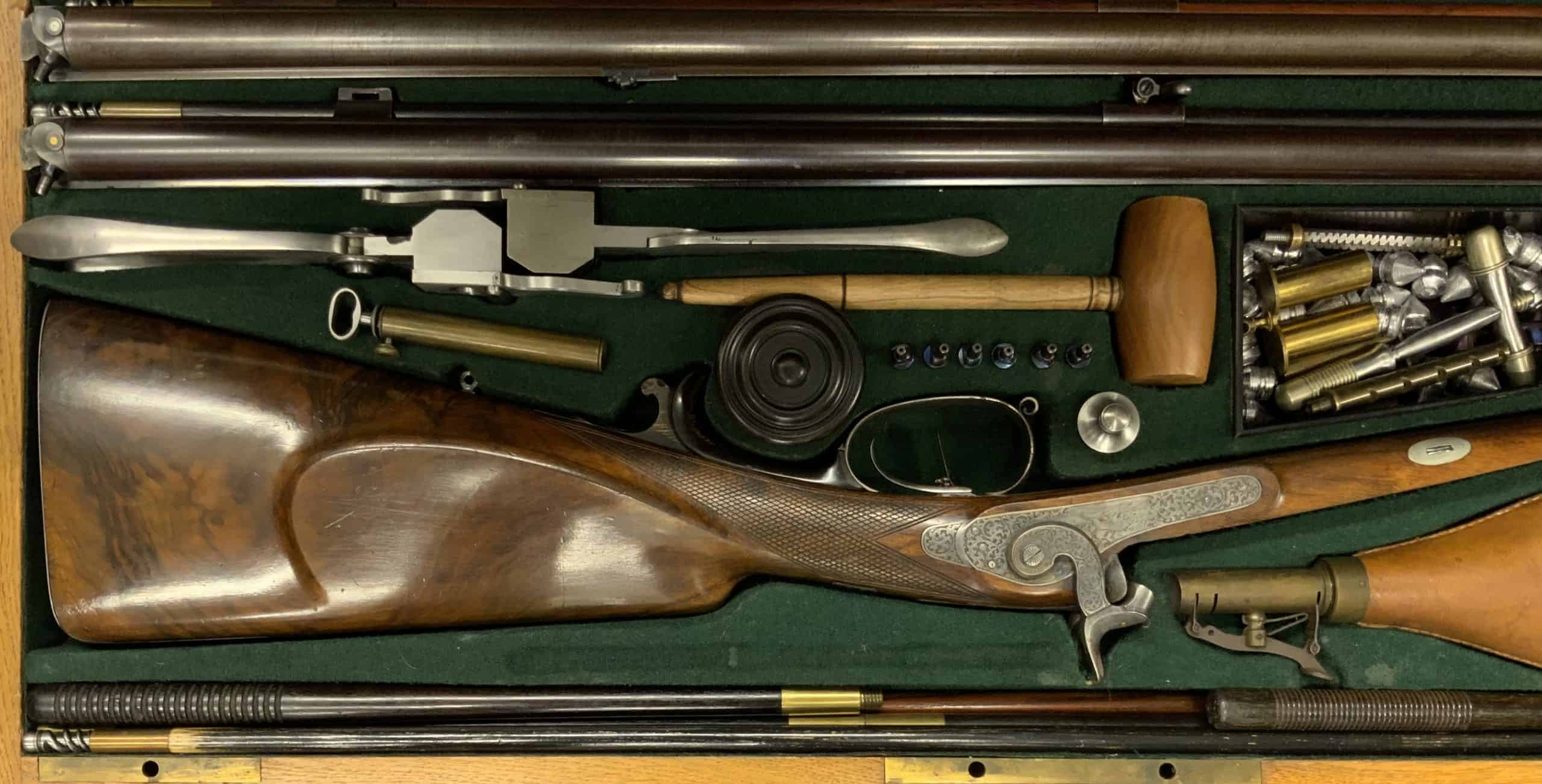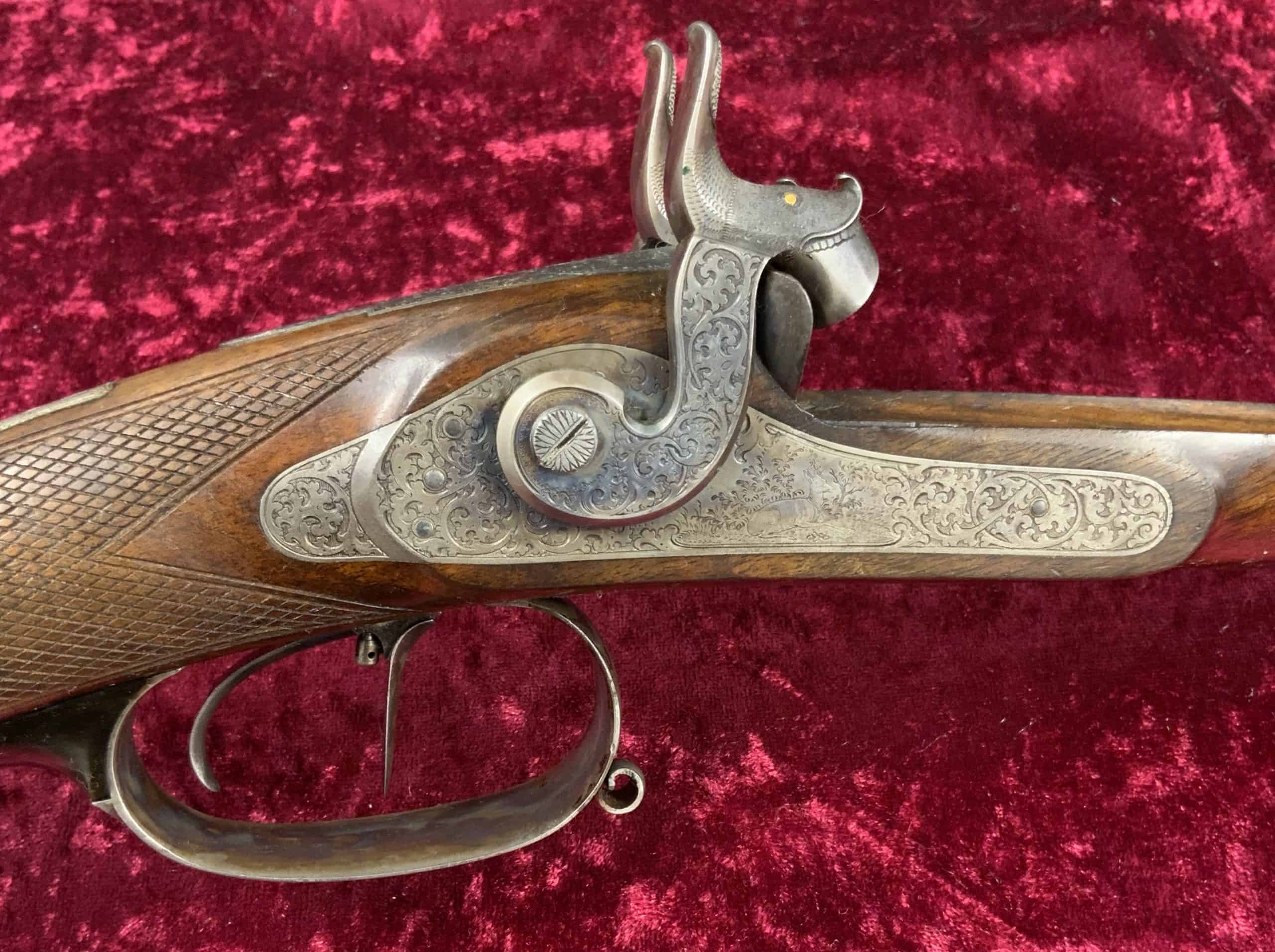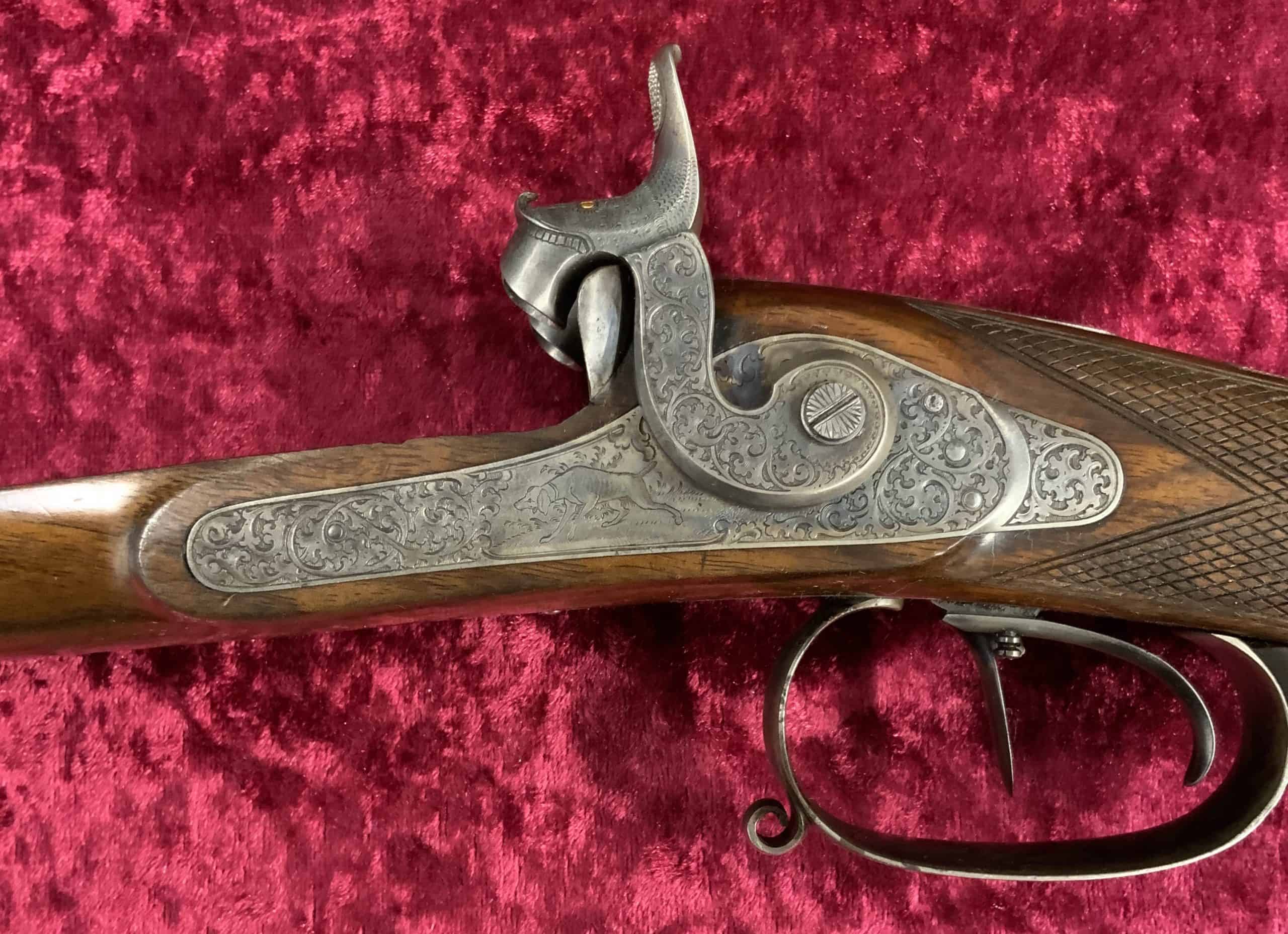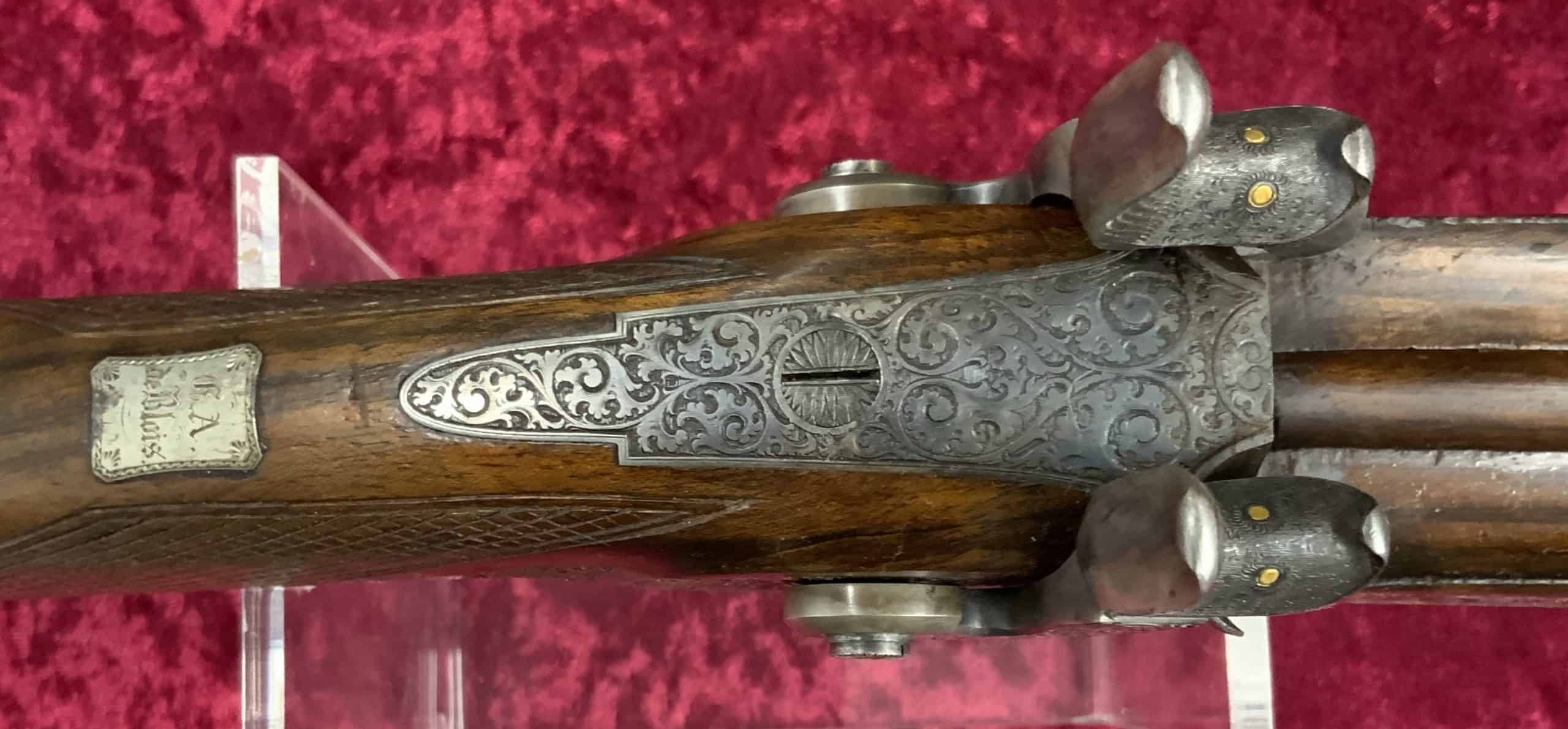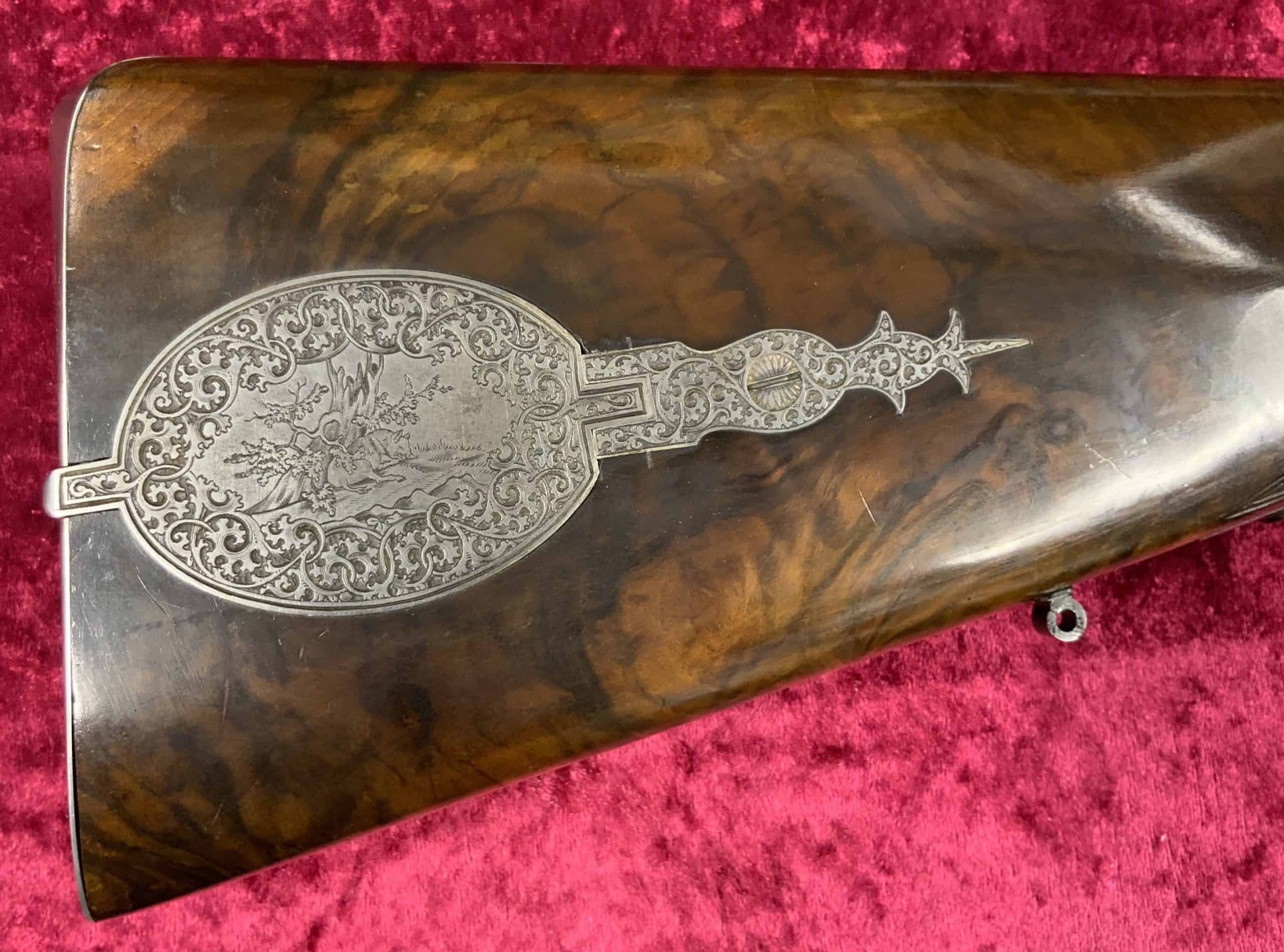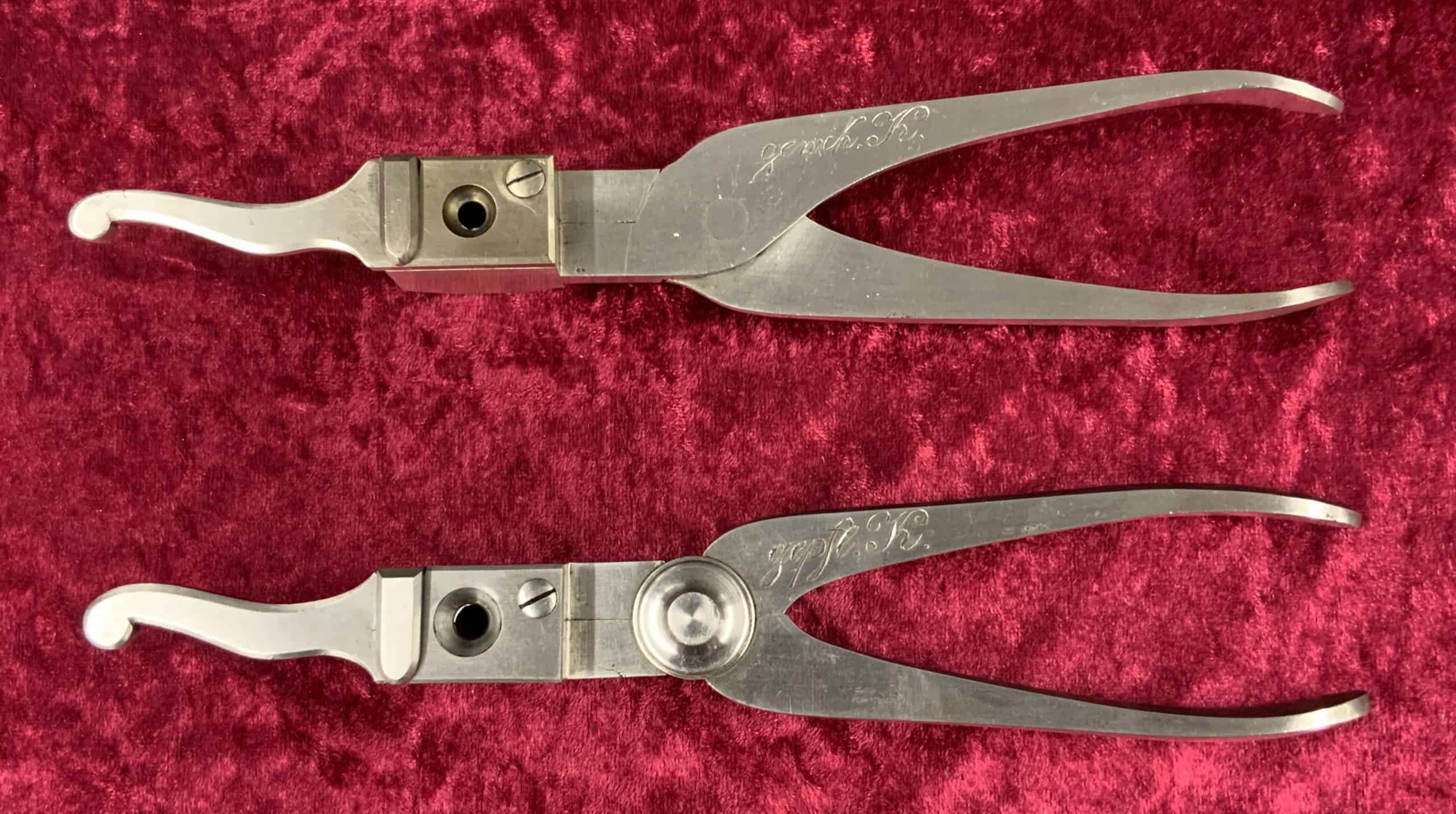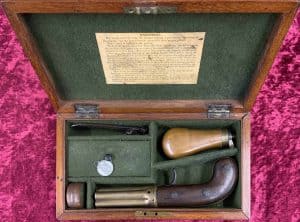Description
Cased Triple Barrel Set by Janeck of Dresden
Cased Triple Barrel Set by Janeck of Dresden. A fine quality double barrelled percussion sporting gun with three sets of barrels (31″) by Janeck of Dresden, circa 1850, who is listed as Büchsenmachermeister (Master Gunmaker) from the 1830’s. Each set of brown twist barrels signed on the broad rib – JANECK IN DRESDEN – and with engraved colour case hardened break-offs with vented platinum plugs.
The first being 20 bore smooth, the second 28 bore; each cut with eight grooves and with dovetailed rifle sights; the third combination 20 bore / 28 bore also with rifle sights. Each with respective rosewood ramrods with worm. The furniture beautifully heavy engraved with scrolling vines, and the locks with dog and stag, the bow with grazing doe, the patchbox with wild boar resting beneath an old oak tree, the hammer noses with dog heads having gold eyes. Adjustable double set triggers. Highly figured half stock with raised cheekpiece and chequered wrist. Horn grip. In it’s original oak case with baize lined close fitting interior. Accessories include: two bullet moulds, shot dispenser, powder and shot flasks, nipple key, turn screws etc.
The gun is Grade One Plus with virtually all original finish. The name de Blois is on the lid of the case and also the escutcheon. With a set of this quality then there must be a connection with the Royal Chateau de Blois and the de Blois family.
Double Rifles
The development of the double rifle has always followed the development of the double-barrelled shotgun, the two are generally very similar but the stresses of firing a solid projectile are far greater than shot. The first double-barrelled muskets were created in the 1830s when deer stalking became popular in Scotland. Previously single barrelled weapons had been used but, recognising the need for a rapid second shot to dispatch a wounded animal, double-barrelled muskets were built along the same format as double-barrelled shotguns already in common use.
These first double-barrelled weapons were black powder, smoothbore muzzleloaders built with either flintlock or percussion cap ignition systems. Whilst true rifling dates from the mid 16th century, the invention of the express rifle by James Purdey “the Younger” in 1856 allowed for far greater muzzle velocities to be achieved through a rifled longarm, significantly improving the trajectory and as such greatly improving the range of these rifles. These express rifles had two deep opposing grooves which were wide and deep enough to prevent the lead bullets from stripping the rifling if fired at high velocities, a significant problem previously.
Cape guns
A cape gun is a side-by-side version of a combination gun, and is typically European in origin. These were at one time popular in southern Africa where a wide variety of game could be encountered. German and Austrian cape guns have the rifled barrel on the right side, which is fired by the front trigger. The front trigger is usually a set trigger as well.
Click here for more Antique Arms


